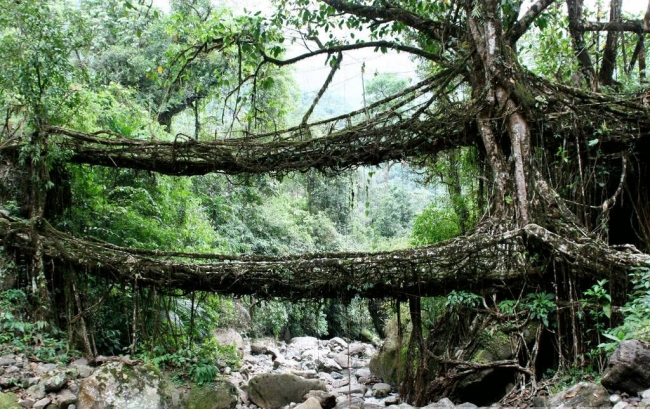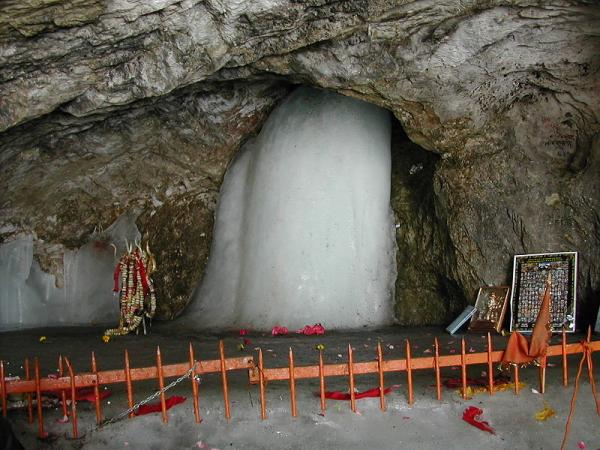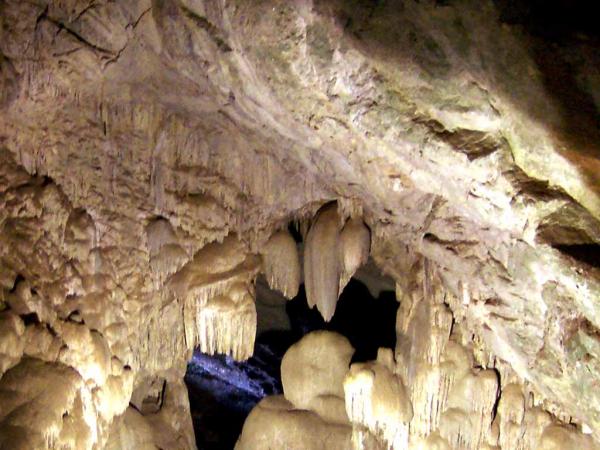
From the huge mountains down to the enchanting castles, India is known as the land of innumerable mythical stories and folklore. Keeping such considerations in mind, the article explores the shrouded layers of India, picking up the five most amazing natural wonders that the country literally dotes in.
Living root bridges in Cherrapunjee
Living root bridges of Cherapunjee is one of the India’s best natural wonders. These are a species of rubber tree which when viewed from a distance, resembles like bridge.
Ficus Elastica is a sort of rubber tree which has secondary roots growing higher up in the trunk. It was first noticed by War-Khasis, a local tribe. Realizing the tree’s immense potential, the tribesmen used betel nut trunks to direct the roots in whatever direction they preferred. Once the roots had grown all the way across the river, they were directed back to the soil, thereby paving way for a bridge-like structure. It takes around 10-15 years for a root bridge to develop.
Unlike its man-made, artificial counterparts, the natural bride grows stronger over time. To make communication across the bride easier, stones and boulders have been placed along the roots. The question now is, how many people can the bridge hold at a time? Fifty, say locals.
Amarnath Temple, Jammu and Kashmir
Amarnath, is one such place, where nature and ancient legends walk side by side. Unlike other cave temples, the Amarnath Temple has developed in a natural formation. The place houses an ice stalagmite, worshiped by Hindu devotees as the Shiv lingam. The legend associated with Amarnath marks that the place itself serves as an abode to Lord Bholanath. The stalagmite grows and then shrinks with the modeling phases of moon. The cave was carved way back in the third century BC as an ode to Lord Shiva.
The Ice lingam in question can be found right at the cave’s corner. When fully grown, the Lingam is over 9 feet tall. This, however, isn’t the only structure inside Amarnath caves that promises to leave you spellbounded. To the right of the cave, there is a feature on the rock face which queerly bears a striking resemblance to Lord Ganesha. Similarly, to the left is a rock formation like Nandi and on the opposite mountain of the temple is the feature resembling Shiva and Parvathi.
Magnetic Hill, Ladakh
When we say that a certain hill in Ladakh has a magnetic pull, we are not trying to describe the beauty or serenity of the place. The hill has magnetic properties so strong that they can actually pull cars uphill or compel passing aircrafts to increase altitude in order to escape magnetic interference. So, what is the scientific community’s take on the whole subject?
According to reports, the effect results entirely from the optical illusion and not out of any magnetic disturbances, as believed. Located on the Leh-Kargil-Srinagar national Highway, the magnetic hill is about fifty kilometers from Leh. Magnets or no magnets, the place holds a great attraction, especially for the nature enthusiasts.
Chir Batti at the Rann of Kutch
It’s lonely, eerie and at first glimpse, appears to have all the right ingredients for a mystery plot. Rann of Kutch, is mysterious not only to look at but also for certain unexplained phenomena, exclusive to the region and the place. Chir Batti, makes this end of the Thar all the more mysterious and enchanting. It can be described as sudden unexplained bright lights occurring mainly on dark nights. The light changes color rapidly and according to locals, often resemble a pear shaped blob of fire which may either move ahead with speed or stop and remain still.
The best time to view such light stream is after 8 p.m. The atmosphere, of course, has to be pitch-dark. As per the folk-lore, these mysterious lights, dubbed harmless by locals, have been a part of life in the Banni grasslands and Rann of Kutch for centuries. Apart from the local population, certain US ornithologists and members of the Border Security Forces have also reported seeing the Cheer Batti phenomena.
Borra caves, Andhra Pradesh
Tucked away in the corner of Araku valley at an elevation of 705m, the Borra Caves cut a beautiful picture. The caves, one of the largest in India, exhibit a plethora of breathtaking speleothems. The stalactites and stalagmites are formed primarily due to water seeping in from the Cave’s ceiling, containing limestone and different other minerals. The limestone formations have, over time, assumed different interesting shapes like that of Crocodile, Human brain, Tiger and Shiv-Parvati even. The caves are also reported to have deposits of mica and are often seen as a possible treasure house for valuable gems and stones.



